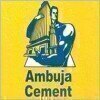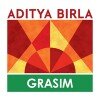Filter interviews by
Clear (1)
ACC Executive Quality Control Engineer Interview Questions, Process, and Tips
ACC Executive Quality Control Engineer Interview Experiences
1 interview found

(11 Questions)
- Q1. Data requirement for a concrete mix design
- Ans.
Data requirements for a concrete mix design
Type of cement
Aggregate size and type
Water-cement ratio
Chemical admixtures
Strength requirements
Environmental factors
Curing method
Proportion of each ingredient
- Q2. What are the different exposure condition of concreting
- Ans.
Exposure conditions of concreting refer to the environmental factors that affect the curing process of concrete.
Temperature and humidity
Wind speed and direction
Sunlight exposure
Rain and precipitation
Airborne contaminants
Proximity to saltwater or other corrosive substances
- Q3. Various methods to determine the workability of concrete
- Ans.
Various methods to determine the workability of concrete
Slump test measures the consistency of concrete
Compaction factor test measures the workability of concrete
Vee-Bee test measures the time taken for concrete to flow
Flow table test measures the flow of concrete
Kelly ball test measures the workability of concrete
Rheometer test measures the viscosity of concrete
- Q4. Which types of problem you have faced in construction project and how did you handle it
- Q5. What are tests on fresh and hardend concrete
- Ans.
Tests on fresh and hardened concrete
Fresh concrete tests include slump test, air content test, and temperature test
Hardened concrete tests include compressive strength test, flexural strength test, and water absorption test
Other tests include density test, chloride ion penetration test, and alkali-silica reaction test
- Q6. What is the standard used for concrete mix design
- Ans.
The standard used for concrete mix design is ACI 211.1.
ACI 211.1 is the standard used for concrete mix design
It provides guidelines for selecting proportions of ingredients based on desired properties
Factors considered include strength, workability, durability, and economy
Other standards such as ASTM C94 and AASHTO M 157 may also be used
- Q7. What is the main role of finess of cement
- Ans.
The main role of fineness of cement is to increase the surface area of cement particles, which enhances the strength and workability of concrete.
Finess of cement refers to the particle size distribution of cement.
A finer cement will have more surface area per unit volume, which leads to better hydration and stronger concrete.
The fineness of cement affects the workability of concrete, with finer cement requiring more wa...
- Q8. Which apparatus used for consistency test of cement
- Ans.
The apparatus used for consistency test of cement is called Vicat apparatus.
Vicat apparatus is used to determine the consistency and setting time of cement.
It consists of a plunger, a graduated rod, a frame, and a base plate.
The test involves measuring the depth of penetration of the plunger into the cement paste.
The consistency of the cement is determined by the amount of water required to produce a standard penetrati...
- Q9. Which standard used for concrete compressive strength test
- Ans.
The standard used for concrete compressive strength test is ASTM C39.
ASTM C39 is the most widely used standard for testing concrete compressive strength.
It outlines the procedures for preparing and testing cylindrical concrete specimens.
The standard specifies the equipment, procedures, and calculations required for accurate testing.
The results of the test are used to determine the strength of the concrete and its suita
- Q10. What action you will take if the 28 days cube strength failed
- Q11. What are the reason behind cracks in concrete
- Ans.
Cracks in concrete can be caused by various factors such as shrinkage, settlement, overload, and weathering.
Shrinkage due to drying and cooling of concrete
Settlement due to uneven subgrade or soil movement
Overload due to excessive weight or traffic
Weathering due to freeze-thaw cycles, chemical exposure, or erosion
Improper mixing, placing, or curing of concrete
Design flaws or inadequate reinforcement
Interview Preparation Tips
Top trending discussions






Interview questions from similar companies

Interview Questionnaire
8 Questions
- Q1. Briefly explain about Mines crusher?
- Ans.
Mines crusher is a machine used to break down large rocks into smaller pieces for easier transport and processing.
Mines crusher is commonly used in mining operations to reduce the size of ore and other materials.
It works by applying pressure to the material to break it down into smaller pieces.
Different types of crushers are used depending on the type of material being crushed, such as jaw crushers, cone crushers, and ...
- Q2. What is PESO ? and explain different forms related to explosives?
- Ans.
PESO refers to different forms of explosives: Primary, Secondary, Emulsion, and Oxidizer.
Primary explosives are sensitive and used to initiate other explosives.
Secondary explosives are less sensitive and used for blasting.
Emulsion explosives are a mixture of oxidizers and fuels.
Oxidizers are chemicals that provide oxygen for combustion.
- Q3. What is stripping ratio?
- Ans.
Stripping ratio is the ratio of overburden to ore or coal.
It is used in mining to determine the amount of waste that needs to be removed to extract a given amount of ore or coal.
A high stripping ratio indicates that a lot of waste needs to be removed before the desired mineral can be extracted.
For example, a stripping ratio of 3:1 means that for every 3 units of waste material removed, 1 unit of ore or coal can be extr
- Q4. What is angle of repose?
- Ans.
Angle of repose is the maximum angle at which a material can be piled up without slumping or sliding down.
It is the steepest angle at which a sloping surface formed of a particular loose material is stable.
It is influenced by the size, shape, and surface properties of the particles, as well as the moisture content and packing density.
Examples include sand dunes, piles of gravel, and heaps of coal.
It is important in fie...
- Q5. Reasons behind the Dump failure?
- Ans.
Dump failure can occur due to various reasons such as hardware failure, software bugs, power failure, etc.
Hardware failure such as disk failure or memory failure
Software bugs or corruption in the dump file
Power failure during the dump process
Insufficient disk space for the dump file
Incompatibility issues with the operating system or drivers
Malware or virus infection
Human error such as accidentally deleting the dump fil
- Q6. How you get Machine and Dumper TPH?
- Ans.
Machine and Dumper TPH can be calculated by measuring the weight of material moved in a certain time period.
Measure the weight of material moved by the machine or dumper in a certain time period
Divide the weight by the time period to get the TPH (tonnes per hour)
Repeat the process multiple times to get an average TPH
Use a weighbridge or load cell to accurately measure the weight
Ensure the machine or dumper is loaded to
- Q7. What is safety!
- Ans.
Safety is the state of being protected from harm or danger.
It involves taking precautions to prevent accidents or injuries.
It can be achieved through proper training, equipment, and procedures.
Examples include wearing protective gear, following safety protocols, and maintaining equipment.
Safety is important in all industries, from construction to healthcare.
It is a shared responsibility of both employers and employees.
...
- Q8. Duties and responsibilities of mines foreman?
- Ans.
Mines foreman is responsible for overseeing the safety, production, and maintenance of a mining operation.
Ensuring compliance with safety regulations and protocols
Supervising and coordinating the work of miners and other staff
Monitoring production levels and ensuring targets are met
Maintaining equipment and machinery
Preparing reports and maintaining records
Training new employees and providing ongoing training to existi

I applied via Campus Placement and was interviewed before May 2022. There were 3 interview rounds.

Test based on basic Mining knowledge
(1 Question)
- Q1. Interview questions based on Blasting process and new technology.

(1 Question)
- Q1. Tell me the difference between one way slab and two way slab
- Ans.
One way slab is supported on two opposite sides only, while two way slab is supported on all four sides.
One way slab is designed to carry loads along one direction only
Two way slab is designed to carry loads along both directions
One way slab is generally used in buildings with rectangular or square shapes
Two way slab is commonly used in buildings with irregular shapes or where the spans are almost equal
Interview Preparation Tips

I was interviewed before Feb 2024.
Aptitude questions with main sub questions
(2 Questions)
- Q1. Prefer not to disclose
- Q2. Just my stream questions
Interview Preparation Tips

I applied via Naukri.com and was interviewed in Oct 2023. There were 2 interview rounds.
(1 Question)
- Q1. Experience, Salary Disscus, Why want you join JK ETC
(1 Question)
- Q1. Different Types questions like Electrical Engineer

Interview Questionnaire
1 Question
- Q1. What is your salary expectation -?

I applied via Indeed and was interviewed in Jul 2023. There were 2 interview rounds.
(2 Questions)
- Q1. Erection of the cement mill
- Ans.
The erection of a cement mill involves the installation and assembly of the mill equipment and machinery.
The cement mill is typically a large cylindrical structure where raw materials are ground into fine powder.
The erection process includes the installation of the mill shell, liners, diaphragm, and grinding media.
Proper alignment and leveling of the mill components are crucial for efficient operation.
Electrical and me...
- Q2. Procedure of erection
- Ans.
The procedure of erection involves the process of assembling and installing structural components to create a stable and functional structure.
Planning and preparation
Site preparation and foundation
Assembly of structural components
Installation of utilities and systems
Finishing and testing
Final inspection and handover
(1 Question)
- Q1. Planning of the erection
- Ans.
Planning of the erection involves creating a detailed plan for the construction process.
Identify the scope and objectives of the project
Determine the sequence of activities and their dependencies
Allocate resources and manpower
Create a schedule and timeline
Consider safety measures and risk management
Coordinate with other teams and stakeholders
Monitor progress and make adjustments as necessary

I applied via Naukri.com and was interviewed in Oct 2021. There were 3 interview rounds.
Interview Questionnaire
1 Question
- Q1. Mechanical maintenance, project related, erection procedures
Interview Preparation Tips

Senior Engineer Interview Questions & Answers
Shree Cementposted on 15 Dec 2023
(1 Question)
- Q1. Related kiln operation
(1 Question)
- Q1. About work culture
Interview Preparation Tips
ACC Interview FAQs
Recently Viewed
Tell us how to improve this page.
ACC Interviews By Designations
- ACC Assistant Manager Interview Questions
- ACC Deputy Manager Interview Questions
- ACC Senior Executive Interview Questions
- ACC Teritory Sales Officer Interview Questions
- ACC Senior Sales Executive Interview Questions
- ACC Engineer Interview Questions
- ACC Accountant Interview Questions
- ACC Analyst Interview Questions
- Show more
Interview Questions for Popular Designations
- Quality Controller Interview Questions
- Quality Assurance/Quality Control Manager Interview Questions
- Quality Control Officer Interview Questions
- Team Leader-Quality Assurance/Quality Control Interview Questions
- Quality Assurance Quality Control Engineer Interview Questions
- Quality Control Analyst Interview Questions
- Executive Quality Control Interview Questions
- Chemist Quality Control Interview Questions
- Show more
Interview Questions from Similar Companies
Fast track your campus placements
|
Assistant Manager
374
salaries
| ₹0 L/yr - ₹0 L/yr |
|
Deputy Manager
232
salaries
| ₹0 L/yr - ₹0 L/yr |
|
Manager
200
salaries
| ₹0 L/yr - ₹0 L/yr |
|
Senior Executive
159
salaries
| ₹0 L/yr - ₹0 L/yr |
|
Senior Engineer
128
salaries
| ₹0 L/yr - ₹0 L/yr |

Ambuja Cements

UltraTech Cement

Shree Cement

The Ramco Cements
- Home >
- Interviews >
- ACC Interview Questions >
- ACC Executive Quality Control Engineer Interview Questions

















